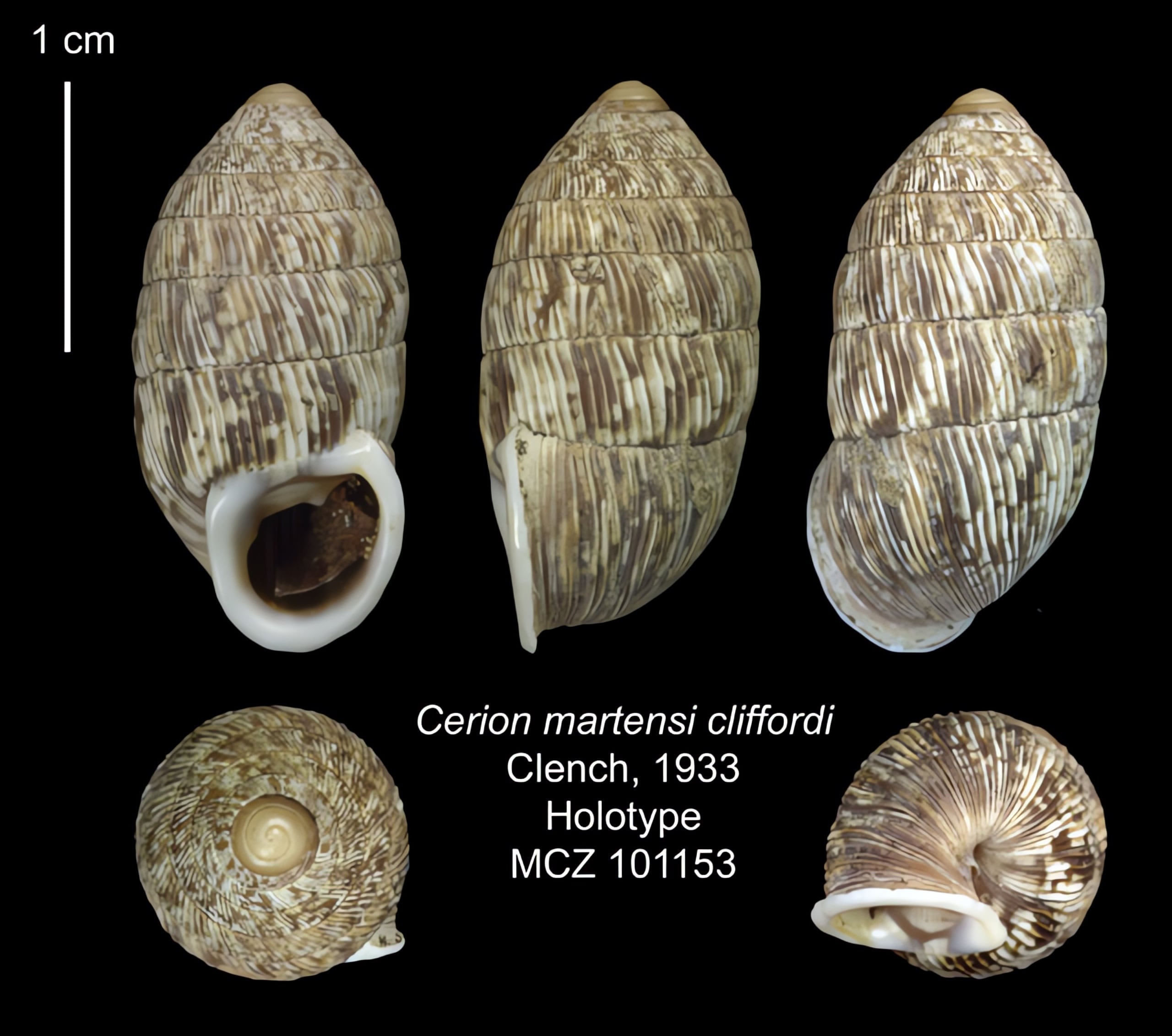"Cerion (Strophiops) martensi cliffordi 1 subsp. nov.
�(Plate I, figure 10)
� Description.?Shell subperforate, cylindric, rather thin but strong, very finely ribbed. Flesh-colored with irregular, dark chocolate blotches that are more or less axially arranged. Whorls 9 to 9 ½, slightly convex, last two nearly parallel-sided, remaining earlier whorls smoothly tapering. First 1 ½ whorls smooth and glass-like, remaining whorls finely ribbed and opaque. Spire acute, produced at an angle of 65° to 70°. Aperture rounded-ovate, colored a dark chocolate within. Mid-parietal tooth and columellar lamella very weak. Lip white, reflected, and not very thick. Sutures well defined but not deeply indented. Sculpture consisting of numerous irregular, fine, close-set ribs, their interspaces about equal to the width of their ribs. There are 50 to 53 ribs developed on the body whorl.
�MEASUREMENTS (in millimeters)
�Length Width Aperture length Aperture width
�21.5 11 6 5 Holotype
�22 10.5 7 5.5 Paratype
�22.5 11 6.5 55 "
�22.5 11 6 5.5 "
�23 12 6.5 5.5 "
�21 11 6 5.5 "
�23 11.5 6 5 "
�22.5 11 5.5 5 "
�21.5 11 6 5 "
�22 10.5 5.5 5 "
� Holotype, Mus. Comp. Zoöl., no. 101,153, Landrail Point, Crooked Island, Bahamas, Barbour, Fairchild and Greenway, collectors (February, 1933). Paratypes, Mus. Comp. Zoöl., no. 101,154, from the above locality. Another colony was obtained on the northern end of Fortune Island, which is close to and immediately south of Crooked Island.
� The new subspecies is more or less intermediate in size between C. martensi Weinl. and C. multistriatum Pils. & Van. There were no smooth forms in the small series obtained by the 'Utowana' party, but probably, upon more extensive collecting, dimorphic colonies will be found. C. marmoratum Pfr. from Fortune Island is smooth, and is probably the non-ribbed form of C. martensi. Pilsbry (1902, p. 239) has placed C. inflatum Maynard (Salena Point, Ackland Island) in the group of C. regium, but, judging from Maynard's paratypes before me, this species is a smooth form of the C. martensi complex, and other than the slightly inflated penultimate and ante-penultimate whorls, it appears to be very close to C. marmoratum."



